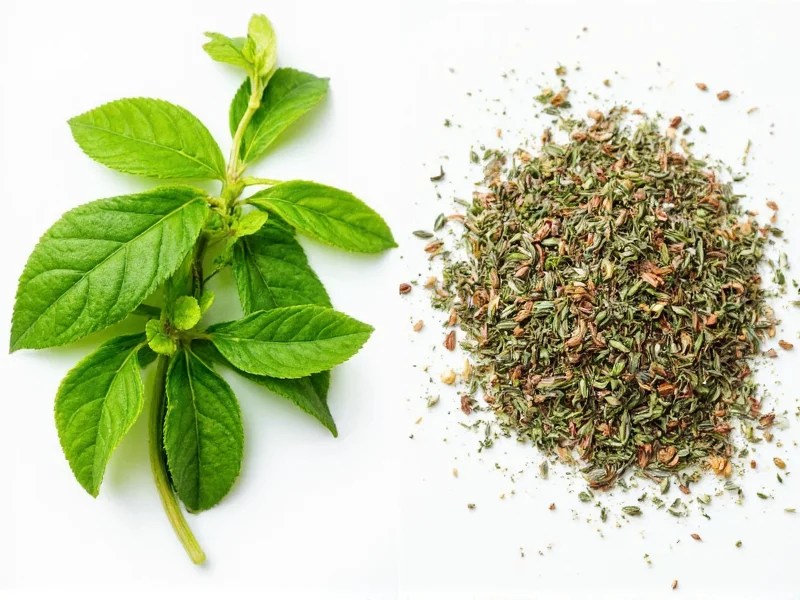Understanding the differences between fresh and dried herbs transforms your cooking from ordinary to exceptional. While both forms enhance flavor, they interact differently with ingredients and cooking methods. This comprehensive guide explores when to reach for each type, how they affect your dishes, and practical tips for maximizing their potential in everyday cooking.
Flavor Profiles: Understanding the Fundamental Differences
Fresh herbs contain higher moisture content, delivering vibrant, grassy notes that can be lost during drying. The drying process concentrates certain compounds while diminishing others, creating a more intense but different flavor profile. For instance, fresh basil has sweet, peppery notes with hints of anise, while dried basil develops warmer, slightly minty characteristics. This transformation explains why some herbs like cilantro and parsley lose significant flavor when dried, while others like oregano and thyme actually intensify.
Optimal Usage: When to Choose Fresh vs. Dried
Certain cooking techniques and dish types benefit from specific herb forms. Fresh herbs generally shine in applications where their delicate flavors won't be overwhelmed:
- Finishing touches: Sprinkle chopped fresh herbs over completed dishes for vibrant color and aroma
- Raw preparations: Essential for salads, salsas, and dressings where cooking would destroy their flavor
- Short-cooking dishes: Ideal for omelets, stir-fries, and quick sautés where herbs won't cook long
Dried herbs excel when:
- Long simmering is required: Soups, stews, and braises allow dried herbs time to rehydrate and release flavors
- Marinades and rubs: Their concentrated flavor penetrates proteins effectively
- Baked goods: Dried herbs maintain stability during baking processes
Substitution Guidelines: Getting the Ratios Right
One of the most common kitchen challenges involves substituting fresh herbs vs dried herbs in recipes. The general conversion ratio serves as a starting point, but understanding herb-specific characteristics yields better results:
| Herb Type | Fresh Measurement | Dried Measurement | Special Considerations |
|---|---|---|---|
| Basil | 1 tbsp | 1 tsp | Dried basil loses sweet notes; add early in cooking |
| Oregano | 1 tbsp | 1 tsp | Dried oregano is more potent; Mediterranean dishes benefit |
| Parsley | 2 tbsp | 1 tsp | Fresh preferred for garnish; dried works in stocks |
| Rosemary | 1 tsp | ¼ tsp | Dried rosemary is extremely potent; crush before using |
| Cilantro | 2 tbsp | ½ tsp | Fresh preferred; dried cilantro loses distinctive flavor |
Remember that dried herbs benefit from being added earlier in the cooking process to allow time for rehydration and flavor release. For best results with dried herbs, rub them between your palms before adding to release essential oils. When substituting dried for fresh in delicate dishes, start with half the recommended amount and adjust to taste.
Storage Techniques for Maximum Freshness
Proper storage significantly extends the usability of both herb forms. Fresh herbs require specific handling based on their structure:
- Soft-stemmed herbs (basil, cilantro, parsley): Treat like cut flowers—trim stems, place in water, cover loosely with plastic bag, and refrigerate
- Hard-stemmed herbs (rosemary, thyme, oregano): Wrap in slightly damp paper towel and store in airtight container in the refrigerator
- Dried herbs: Store in airtight containers away from light and heat; proper storage maintains potency for 1-3 years
Freezing provides an excellent preservation method for fresh herbs. Chop herbs, place in ice cube trays, cover with water or olive oil, and freeze. These herb cubes work perfectly for soups and sauces. Alternatively, freeze whole sprigs by placing them in freezer bags with as much air removed as possible.
Economic and Practical Considerations
When evaluating fresh herbs vs dried herbs cost effectiveness, several factors come into play. While fresh herbs typically cost more per ounce, their stronger flavor means you often use less by volume. Dried herbs offer better shelf stability, reducing waste. A cost comparison reveals that dried herbs generally provide better value for infrequent users, while regular cooks might find fresh herbs more economical when purchased in season.
Consider your cooking habits when deciding between fresh and dried herbs. If you cook daily, fresh herbs provide superior flavor in many applications. For occasional cooks or those preparing long-simmering dishes, dried herbs offer convenience and consistent results. Many professional kitchens maintain both forms, using dried for base flavors and fresh for finishing touches.
Herb-Specific Recommendations
Not all herbs translate equally between fresh and dried forms. Understanding which herbs work best in each form elevates your cooking:
Best used fresh: Cilantro, dill, chives, mint, and tarragon lose significant flavor when dried. Their delicate compounds don't survive the drying process well, making fresh versions essential for authentic flavor.
Best used dried: Oregano, rosemary, thyme, and bay leaves often develop more complex flavors when dried. The concentration process enhances their earthy notes, making them ideal for Mediterranean and rustic cooking.
Works well both ways: Sage, parsley, and basil can be used in either form depending on the application. Fresh versions shine in delicate dishes, while dried forms work well in heartier preparations.
Avoiding Common Herb Mistakes
Even experienced cooks make herb-related errors that diminish dish quality. The most frequent mistake involves improper substitution ratios—using equal amounts of dried instead of fresh herbs creates overpowering results. Another common error is adding dried herbs too late in the cooking process, preventing proper flavor development.
When using dried herbs in cold applications like salad dressings, reconstitute them first by mixing with a small amount of warm water or vinegar. This allows the flavors to bloom before incorporating into your recipe. For fresh herbs in hot dishes, add delicate varieties like basil and cilantro during the final minutes of cooking to preserve their volatile oils.











 浙公网安备
33010002000092号
浙公网安备
33010002000092号 浙B2-20120091-4
浙B2-20120091-4